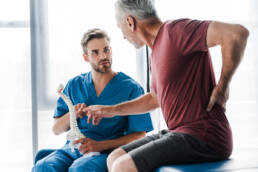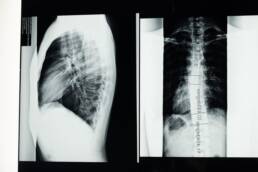As a parent, you do everything you can to ensure your child’s health and well-being. In some families, that means making difficult decisions regarding things like whether your son or daughter needs a scoliosis brace. Affecting millions of children around the world, adolescent idiopathic scoliosis can make it difficult – or even impossible – for youngsters to participate in many of the most common activities of adolescence.
If your child has scoliosis, you’ve likely wondered whether they need a brace. In this blog post, we’ll discuss a few of the most common types of braces and provide you with information to help you make the best decision for your child’s health.
Common Types of Scoliosis Braces
For decades, various types of braces have been used to treat scoliosis in children. Unfortunately, they tend to be rather ineffective in terms of actually correcting the curvature of the spine. While they may prevent the worsening curvature, most adolescents who are fitted with braces ultimately end up requiring surgery for their condition.
Traditionally, one of three types of braces is used to treat adolescent idiopathic scoliosis:
- Boston Brace
- Charleston Bending Brace (also referred to as the nighttime brace)
- Milwaukee Brace
Boston Brace
A type of Thoracic-Lumbo-Sacral-Orthosis (TLSO) brace, the Boston brace is the type most commonly used in the United States. It was developed in 1972 at the Boston Children’s Hospital and is intended to correct a sideways curve. Made from hard plastic, it wraps around the patient’s lower back, hips, and ribcage.
Rather than being customized for each patient, the Boston Brace is mass-produced. Patients are instructed to wear it for 18 to 23 hours per day for up to five years. As reduction of the curvature progresses, the patient may be instructed to transition to part-time wear before being weaned out of the brace entirely.
The Boston Brace is designed to be uncomfortable and encourage the wearer to position their spine for relief. In doing so, the spinal curvature is corrected. The Boston Brace is intended to essentially squeeze the spine into the proper position.
Charleston Bending Brace
Also known as the overnight brace, the Charleston Bending Brace is intended to be worn during sleep. It was developed in the late 1970s and is intended to correct single thoracolumbar curves while the patient is asleep. In addition to taking advantage of the non-weight-bearing positions that are common during sleep, doctors created this brace to help children avoid the stigma of wearing a full-time brace.
The Charleston Bending Brace is molded to the individual patient’s body. It is meant to overcorrect the curvature by conforming to the body when the patient is best toward their curve’s outward bulge.
Milwaukee Brace
The Milwaukee Brace, also known as the Cervico-Thoraco-Lumbo-Sacral-Orthosis (CTLSO) brace is used to treat high thoracic curves in the mid-back area. It is similar to the Boston Brace in that it has a bulky design that extends from the neck all the way to the pelvic region. The pelvic girdle and neck ring are connected by metal bars that extend the full length of the torso and keep the head centered. Strategically placed pads squeeze the spine into the proper alignment.
Problems Associated with Scoliosis Braces
While braces are widely used to treat scoliosis in children, they often are not the best solution. Scoliosis is a three-dimensional solution, and these braces only attempt to provide a two-dimensional solution. They also often cause additional problems. For example, the Boston Brace may prevent worsening curvature, but it also weakens and restricts the wearer’s abdomen. And because it squeezes the spine into proper positioning without providing any additional strength or stability, it can weaken the spine.
The braces traditionally used to treat scoliosis can also cause discomfort, pain, inconvenience, and a number of other issues, including:
- Soreness or tightness in the hip muscles
- Restricted breathing
- Skin irritation
- Heat-related discomfort
- Inability to bend the torso
- Restricted movement
- Difficulty exercising
Braces are also commonly fitted improperly, which can result in everything from bowel obstructions to discomfort when breathing. Even when scoliosis braces are fitted properly, they often are not worn properly. This is especially true among teenagers, who are often hesitant to wear their braces as prescribed due to potentially negative social aspects.
An Alternative to Traditional Scoliosis Bracing
At Denver Physical Medicine, we believe in taking a proactive approach to treating adolescent idiopathic scoliosis. Instead of relying on braces intended to squeeze the spine into the correct position, however, we focus on techniques and tools intended to strengthen the spine, improve function, and naturally reduce curvature. While we may employ certain bracing techniques, we only use those that adjust the spine in a truly corrective manner rather than those that squeeze the spine into position and limit function.
Adolescent Scoliosis Treatment in Denver
If your child has scoliosis, don’t assume that being fitted for a device like the Boston Brace is unavoidable. There are alternatives, and at Denver Physical Medicine, we are here to help you find the right one for your child. To learn more or to schedule an appointment, please contact us today.
Ready for an expert opinion? Get in touch today!
Discover how physical therapy can help manage scoliosis in mild to moderate cases, along with other ways it offers healthcare solutions. Learn more from Dr. Mansi Dua, DPT, C2 Schroth Certified.
Like this article? Spread the word!
Related Posts
May 15, 2025
Comprehensive Guide to the Intensive Scoliosis Program at Denver Physical Medicine & Rehab
Discover the Intensive Scoliosis Program at Denver Physical Medicine & Rehab, offering…





